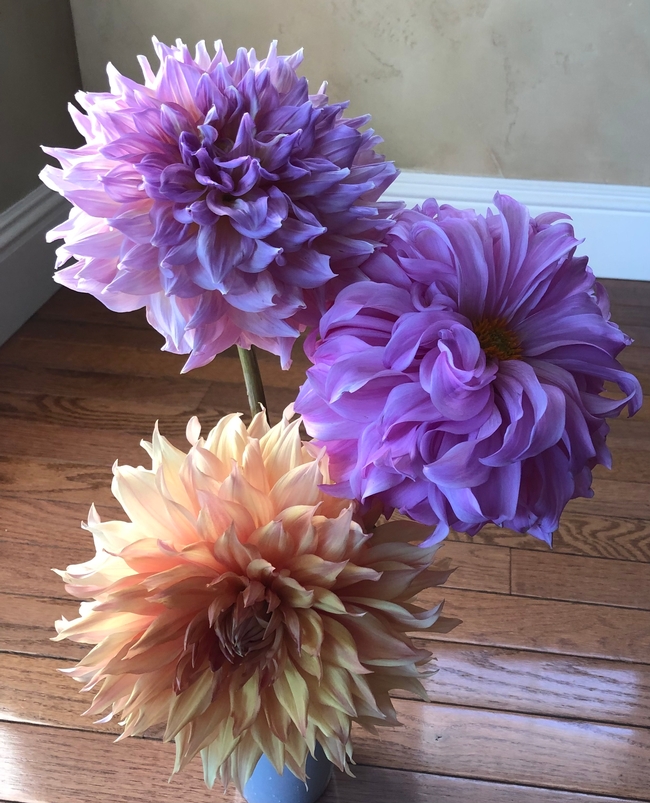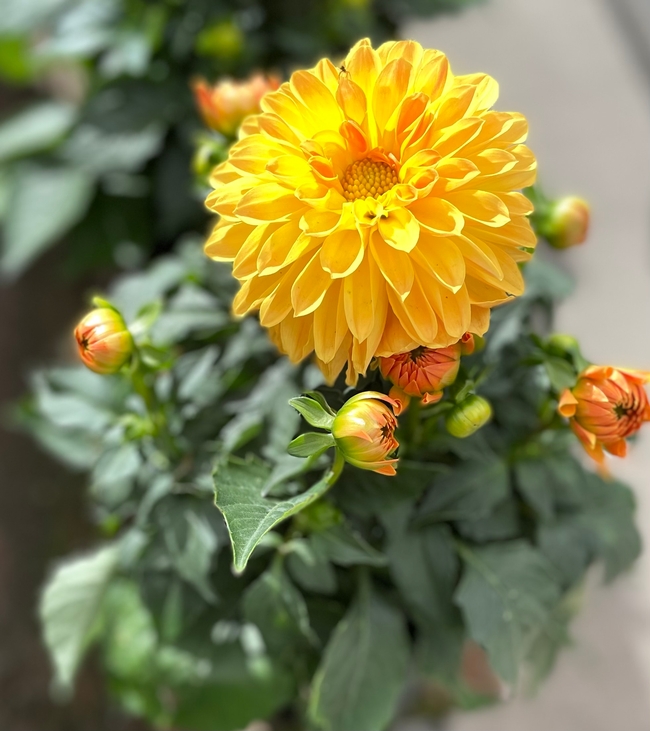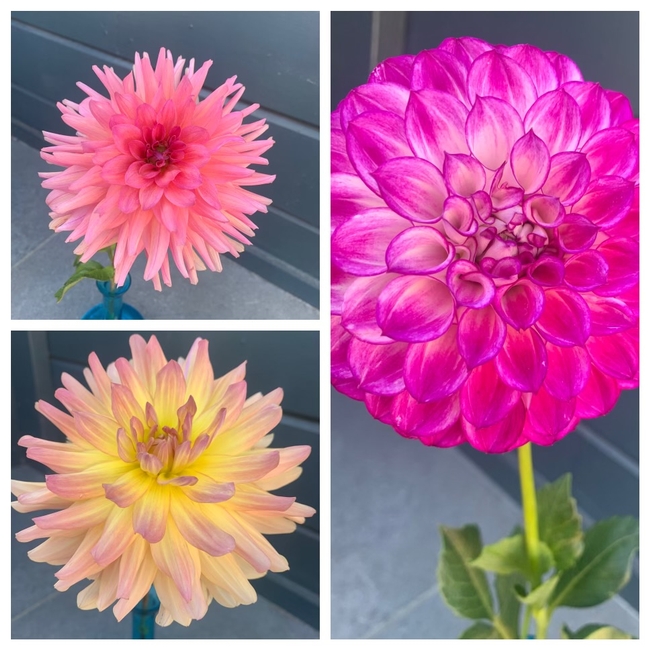Why do I love dahlias so much? They are the perfect summer flower blooming in a wide range of forms and colors, from brilliant reds and purples to variegated pinks and lovely whites. They can be the size of a dinner plate or as small as the tiny balls called pom poms, with petals from straight to curly and everything in between.
Some dahlias are planted as tubers, but don't let that scare you. You can also purchase them at nurseries in gallon containers in late spring and summer.
How can you not be attracted by names like ‘Café au Lait' and ‘Fuzzy Wuzzy'? Dahlias will give you vibrant flowers for weeks. In Napa Valley, they are at peak performance from midsummer to early fall, adding spectacular color to your landscape.
Have I piqued your curiosity yet? Dahlias are part of the Asteraceae family, as are sunflowers. The International Register of Dahlia Names, launched in 1969, is maintained by the Royal Horticultural Society. The RHS published the 28thsupplement to the register in 2019, tracking 62,000 cultivar names.
Dahlias want a sunny location with eight hours of sun each day and good soil. If you are planting tubers, you can do so as soon as the soil warms. The soil can be slightly damp but should not be soggy.
Dig a hole four to six inches deep and slightly wider than the tuber. Sprinkle some bone meal into the hole and place the tuber in the hole sideways with the “eyes” facing up.
Plant tubers one to three feet apart depending on the dahlias' full-grown size. If you love the big dinner-plates types, give them room to grow and stake them for support. Tomato cages work well. I use leftover rebar stakes and garden tape to support the stems as they grow. You can also use wood stakes, irrigation pipes or bamboo stakes.
Avoid watering until the stems break through the warm earth and are four to six inches tall. Then water deeply once or twice a week during summer. Start feeding with a 5-10-10 fertilizer when you start regular watering.
Do not mulch or compost around the base of the plant as that may keep the soil too damp and cool. Cold and wet soil can cause tubers to rot. Dahlias should start blooming about eight weeks after planting.
Each stem usually produces one to three buds. You can remove the outer buds to show off a single bloom if you want. Remember to deadhead spent flowers.
Watch for snails and slugs because they love dahlias, too. You can get rid of them by hand picking. Dahlias are also susceptible to aphids, thrips and spider mites. If you see these pests, wash them off with a gentle spray from the garden hose or knock them back with an application of Neem oil, a natural treatment. You might also consider natural predators such as ladybugs, lacewings or predatory wasps, available at local nurseries. The good news is that dahlias are not one of deers' favorite foods.
The best time to cut dahlias for indoor display is in the cool morning or evening hours. For longevity in the vase, cut the blooms when they are just starting to open or have just opened. Immediately put the stems in two to three inches of water. This method works well on any woody stemmed flower. Change the water every couple of days as it discolors. I have gotten stems to last for up to 10 days.
In Napa Valley you can leave your tubers in the ground over the winter. Cut them back and put some mulch over the top to keep the soil warmer. Some people prefer to dig up their dahlias tubers in the fall because, if left in the ground, the tubers develop into a large cluster producing less productive stalks.
If you want to lift your dahlias for the winter, cut back the stalks in late fall and carefully dig up the underground tubers. Clean off any debris and remove any damage. If the tubers look healthy, leave them in the sun to dry slightly if damp. You can divide them at this point, leaving an eye in each new tuber.
Store the tubers in a cool dark location buried in peat moss, vermiculite or sawdust. Check them periodically over the winter and mist them if they start to dry out. Next spring share some with a follow dahlia lover or a new convert. Now sit back and enjoy your blooms.
The American Dahlia Society (https://www.dahlias.org) is an excellent source of information.
Workshop: Join UC Master Gardeners of Napa County for a workshop on “Growing Olives” on Sunday, May 7, from 2 pm to 4 pm. Learn what varieties to plant, where to plant them and how to maximize fruit size and yield. Register at: https://ucanr.edu/2023FoodForumMay to receive the event location.
Guided Tree Walk: Join UC Master Gardeners of Napa County for a free guided tree walk at Fuller Park, corner of Oak and Jefferson Streets, Napa, on Friday, May 12, from 10 a.m. to noon. Space is limited and each attendee must pre-register separately. Register at https://surveys.ucanr.edu/survey.cfm?surveynumber=40549.
Help Desk: The Master Gardener Help Desk is available to answer your garden questions on Mondays and Fridays from 10 a.m. until 1 p.m at the University of California Cooperative Extension Office, 1710 Soscol Avenue, Suite 4, Napa. Or Send your questions to mastergardeners@countyofnapa.org. Include your name, address, phone number and a brief description of the problem. For best results, attach a photo of the plant. You may also leave a voicemail message with the same information at 707-253-4143.


